CAREERS IN AVIATION & AEROSPACE 2022
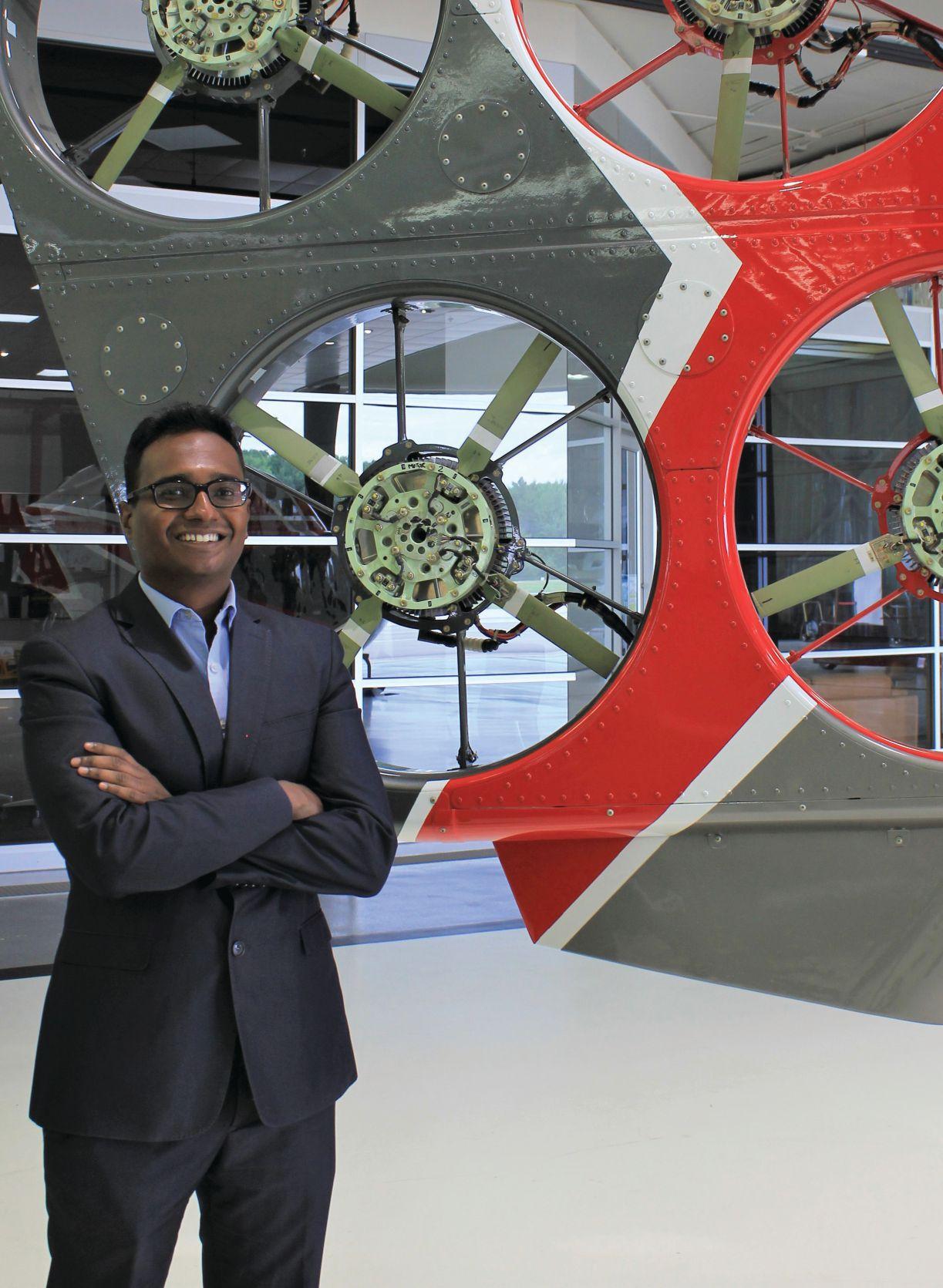
EDUCATION AND TRAINING RESOURCES FOR CANADIAN FIXED- AND ROTARY-WING INDUSTRIES
pilatus-aircraft.com







EDUCATION AND TRAINING RESOURCES FOR CANADIAN FIXED- AND ROTARY-WING INDUSTRIES
pilatus-aircraft.com





ell Textron Canada began 2022 with series of recent milestones under its belt, which includes seeing the Bell 429 helicopter surpass 500,000 global fleet hours. The 429’s light twin-turbine flexible platform – fitting a range of missions from corporate and HEMS to law enforcement and utility – is matched by its capabilities to navigate complex missions with demanding global customers from the Swedish National Police and New York Police Department to Air Zermatt’s famed Swiss Alps rescue team and the Canadian
There are now more than 400 aircraft in the Bell 429 helicopter fleet, since the platform first received Type Certification from Transport Canada Civil Aviation on July 1, 2009, quickly followed by U.S. clearance on July 7. The 429 GlobalRanger was primarily designed at Bell’s Centre of Excellence in Mirabel, Quebec, where the first prototype flew in February 2007 after teaming up with powerplant provider Pratt & Whitney Canada. The 429 helicopter is arguably Bell Textron Canada’s most successful commercial program, with the company in September 2021 celebrating 35 years of operation. “Today, the Bell team is a driving force for aerospace innovation in Canada and throughout the aviation industry, delivering safe and reliable aircraft, and offering superior customer experience,” said Steeve Lavoie, President of Bell Textron Canada, reflecting on the anniversary. Certifying single- and twinengine helicopters over the last 35 years, Bell Textron Canada has produced more than 5,600 commercial aircraft operating around the world, among which 1,000 are
The 400th Bell 429 was actually delivered to the Canadian Coast Guard (CCG) in Nov. 2021, completing a light helicopter renewal program launched in 2014 and worth more than $338 million with seven Bell 412EPI and 16 Bell 429 helicopters. The delivery made CCG the world’s largest 429 operator, with the helicopters providing a range of support to ships engaged in critical maritime work, including aids

to navigation, environmental response, search and rescue, and even icebreaking operations – flying in a radius stretching as far as five kilometers to report ice conditions back to vessels. The CCG’s Bell 429s also featured some of the aviation industry’s first applications of bubble windows for greater vertical visibility, which are now common in challenging helicopter support environments. Every year, the Canadian Coast Guard’s 16 Bell 429 helicopters fly more than 5,500 hours.
“There’s definitely a great sense of pride and accomplishment around the 429 aircraft,” says Thuva Senthilnathan, who, as a young aerospace engineer in his late-20s, was tasked with leading a highvisibility project in 2016 to enhance the capabilities of the CCG’s new Bell 429s. He joined Bell’s Mirabel facility in 2012 after completing his Bachelor of Engineering at McGill University, beginning as an Airframe Design Engineer before moving into roles such as Production Supervision
and Program Management. In 2015, along with 13 colleagues from a pool of 100 applicants across four Bell sites (Mirabel, Amarillo, Fort Worth and Mexico), Senthilnathan was selected for the Bell Front Line Leadership program. This mentorship training served him well in taking on the CCG project, organizing the engineering team to find a solution for this important client, on-time and on-budget, and allowing the CCG to complete its critical missions in 2017. This same work also allowed for the on-time departure of the C150 Global Odyssey 429 tour later that year – the first Canadian helicopter circumnavigation of the globe by a father and son team.
“One advantage of being at Bell in Mirabel, at the Centre of Excellence, is that not only do we get to design aircraft, we see how they are built and we see them fly,” Senthilnathan says, describing the opportunities for career development provided by Bell. “There is no proper description for
the feeling of pride – and maybe even a little bit of fear – you have as a young engineer coming in, being able to design something and getting raw feedback from pilots and people who are working around the aircraft. It’s a dream job.”
In 2018, Senthilnathan was promoted to Engineering Manager and tasked with directing a team to develop, build and fly the remarkable Electrically Distributed Anti-torque (EDAT) system on a twin-engine 429 test bed, derivatives of which are likely to one day change the face of Bell’s commercial helicopters and possibly the entire vertical-lift industry. EDAT is composed of four small fans within a tail rotor shroud in an offset two-by-two pattern. Each of the rotors contains four blades, which are powered by separate motors with the electrical energy provided through generators driven by turbine engines. This design effectively reduces noise and offers lower operational and maintenance costs compared to an aircraft with a conventional tail rotor.
“The great thing about this project is that it changed our mindset, our mentality for what we thought was possible. It changed my personal mentality for sure,” says Senthilnathan. “One of our values at Bell is to make the impossible possible and, in this project, we were really able to do that. The idea is not to force yourself to do something that’s infeasible. The idea is to challenge your assumptions, challenge what you think you can do, and push yourself and the people around you to do incredible things.”
Parent company Bell Textron of Fort Worth, Texas, has been operating for 87 years and is renowned for its innovation of flight, as the first aircraft company to break the sound barrier – with the Bell X-1 flown by Chuck Yeager – and also the first to certify a commercial helicopter. Purchased by Textron in 1960, Bell Aerosystems was also instrumental in driving NASA’s first lunar mission by delivering two Lunar Landing Research Vehicles (LLRV) in 1964, well before the space agency had even determined how it would get to and land on the moon. Described by NASA then as the first pure fly-by-wire aircraft to fly in Earth’s atmosphere, the LLRVs would become critical trainers under the new Lunar Orbit Rendezvous concept.
Today, Bell is preparing to certify the 525 Relentless, designed to carry two pilots and up to 16 passengers, as world’s first commercial helicopter with fly-by-wire flight controls. The company is also heavily focused on defining the future of advanced air mobility with a strong push into electric propulsion. This is highlighted by marquee programs like the Nexus eVTOL aircraft, which includes key input from the Mirabel facility, and – amid the ambitions of Urban Air Mobility startups – will help form the backbone of future vertical lift aircraft. Bell’s Autonomous Pod Transport 70 drone serves as the lead technology partner in NASA’s Systems Integration and Operationalization (SIO) demonstration program and in late 2020 completed a key 10-mile BVLOS trial using prototype Xwing detect-and-avoid technology in an urban environment. Bell AerOS, introduced in January 2020, is being designed under SIO to track all future aircraft types during passenger flights and logistics operations.
The Bell Mirabel EDAT team in 2019 completed its first flight of the test bed and Senthilnathan along with three of his colleagues were awarded the Lawrence D. Bell Pioneer Award for Innovation for the test program, all while completing his MBA at McGill in the same year. He was promoted to the position of Program Manager with a mandate to build entirely new business and revenue streams for Bell. EDAT was shown publicly for the first time in early 2020 and the demonstration phase wrapped up later that year. Now Senthilnathan and his team of engineers are working on product road maps for many of Bell’s products.
“I had no idea of the breadth of different work scopes that we do here, in terms of all of the different disciplines of engineering that are here, the actual amount of production we do, the amount of flight testing we do, and the amount of new development that’s done here,” Senthilnathan explains, relating to when he first

joined the company. There are currently four commercial helicopter types being built in Mirabel, including the 429, 412EPI, 505 Jet Ranger X and most recently the 407GXi, which in late2020 surpassed 50,000 flight hours in less than two years after commercial release. Bell Textron Canada has made an enormous impact on parent company’s all-important commercial segment and its pursuit of innovation of flight.
“Bell has always very much valued Mirabel in terms of our capabilities in the commercial space. We are expanding our skill sets in terms of the engineering disciplines that we’re taking on,” Senthilnathan says, pointing to, for example, the facility’s growth in avionics expertise.
Bell sold its first helicopter into Canada in 1945, a Bell 47 to Lundberg-Ryan Air Exploration, and established its Canadian footprint with a supply centre in 1969. Bell Textron Canada has partnered with the Canadian and Quebec governments for more than 50 years, most prominently seen in the Royal Canadian Air Force’s H-146 Griffon fleet comprised of 85 militarized multirole Bell 412 CF helicopters, the Canadian Coast Guard, and the Sûreté du Québec. In 2018, Bell was chosen to perform the first phase of the Griffon Limited Life Extension (GLLE) modernization project. Bell has also offered the Bell 429 for the Future Aircrew Training (FAcT) program.
Bell Textron Canada’s supply chain, according to analytics firm OMX, sustains more than 6,200 jobs in Canada, involving around 550 suppliers across the country and contributing $848 million to Canada’s GDP per year. The company itself, including Mirabel and a supply centre in Calgary, Alberta, holds approximately 1,300 highly skilled employees focused on innovation, product development, airframe design, world-class composite production, complete integration, certification, and service and support for customers around the globe. | W
AND ROTARY-WING
BY PROVINCE AND TERRITORY
Alkan Air Flight Academy | Whitehorse
Alkan Air is partnered with Yukon College to offer one year or 30 credits toward the school’s two-year Aviation Management diploma program. The majority of ground school courses occur during the evening at Alkan Air and flight training must take place during daylight hours (exception is night time flight training). Alkan Air itself provides Private Pilot and Commercial Pilot License training. The operation provides a unique environment to learn in a northern climate, with access to an international airport and gravel strips in remote areas.
Canadian Flight Centre | Boundary Bay & Kamloops
Canadian Flight Centre opened in 1979 at B.C.’s Boundary Bay Airport, near Vancouver, and became one of the first flight schools to specialize in instrument flying and other advanced training. CFC has trained thousands of pilots and today its students come from six continents (Antarctica excluded). Kamloops proximity to the mountains provides the opportunity for mountain checkouts.
Canadian Helicopters | Penticton
Canadian Helicopters operates its flight school under the name HNZ Topflight, providing training programs to both company pilots and external clients. The school traces its origins to 1951 when it was known as the Canadian Helicopters School of Advanced Flight Training.
Chinook Helicopters | Abbotsford
Chinook Helicopters began training operations in 1982 at the Abbotsford Airport, from where it continues to operate. The Abbotsford area is well suited for yearround helicopter training. Chinook utilizes the expansive Fraser Valley for all initial flight exercises, and the Coastal Mountain
Range for intermediate and advanced exercises.
Coastal Pacific Aviation | Abbotsford
Coastal Pacific Aviation, located at Abbotsford Airport, partners with The University of the Fraser Valley to combine a diploma or degree together with a Commercial Pilot’s Licence with multi-engine and instrument rating. Its programs also include Seaplane Endorsement, Private Pilot Licence, Commercial Pilot Licence, Multi-Engine Rating, Instrument Rating, Night Rating and Instructor Rating.
The Pacific Flying Club (PFC) was formed in 1965 as the Canadian Pacific Airlines Employees Flying Club. Students train at Boundary Bay Airport, where it has been located since 1985. The not-for-profit organization has a fleet of 27 aircraft and three simulators. It is a partner with the British Columbia Institute of Technology’s flight program.
Southern Interior Flight Centre | Kelowna
Southern Interior Flight Centre is located at Kelowna International Airport in the Okanagan Valley, which allows for exposure to every level of controlled and uncontrolled environments a pilot might encounter. The Southern Interior Flight Centre provides a range of flight training programs.
Victoria Flying Club | Sidney
The Victoria Flying Club has been training professional pilots since 1946. VFC works with its students to develop a customized training program that will help you achieve any of your flying goals. It operates a fleet of 10 Cessna 172SPs, a Piper Seminole, and three recreational rental aircraft (C172N, PA-28-140, & PA-28R-200) for CPL time building. It also offers training and private rental of a Redbird FMX simulator. The VFC is accredited as a Private Training Institution with the Ministry of Advanced Education, as well as a Designated Learning Institution federally. As such, VFC’s

students can seek student aid as well as using their RESP and/or VETB funding towards their post PPL flight training.
Calgary Flying Club | Calgary
The Calgary Flying Club (CFC), based CYBW Springbank Airport, provides a range of flight training, including Private Pilot Licence Commercial Pilot Licence, Multi-Engine Rating, and Advanced IFR Program. Its advanced IFR program is designed for either single or multi-engine aircraft.
Centennial Flight Centre | Edmonton Centennial Flight Centre, in operation since 1967, is located at Villeneuve Airport, approximately 20 kilometres northwest of Edmonton. It provides training for Recreational Pilot Permit, Private Pilot Licence, Commercial Pilot Licence, Multi-Engine and Instrument Rating.
Edmonton Flying Club | Edmonton Edmonton Flying Club, home of the Edmonton Flight College, is located just west of Edmonton, operating out of Parkland Airport in Parkland County. Originally founded in 1927 as the Edmonton and Northern Alberta Aero Club, the club’s first president was Canadian World War 1 flying ace, Wilfrid R. May. Today, the Edmonton Flying Club is a member-owned organization with a diverse fleet of aircraft and providing flight training at all levels from recreational pilots to Commercial MultiInstrument rated, career-ready pilots.
Mountain View Helicopters | Springbank
Mountain View Helicopters (MVH) has trained pilots for commercial or private helicopter licences from its Springbank Airport location since 1995, near Calgary International. MVH is able to provide flying weather found on the prairies and also proximity to mountains.
Super T Aviation | Medicine Hat
Super T Aviation is one of the premier flight
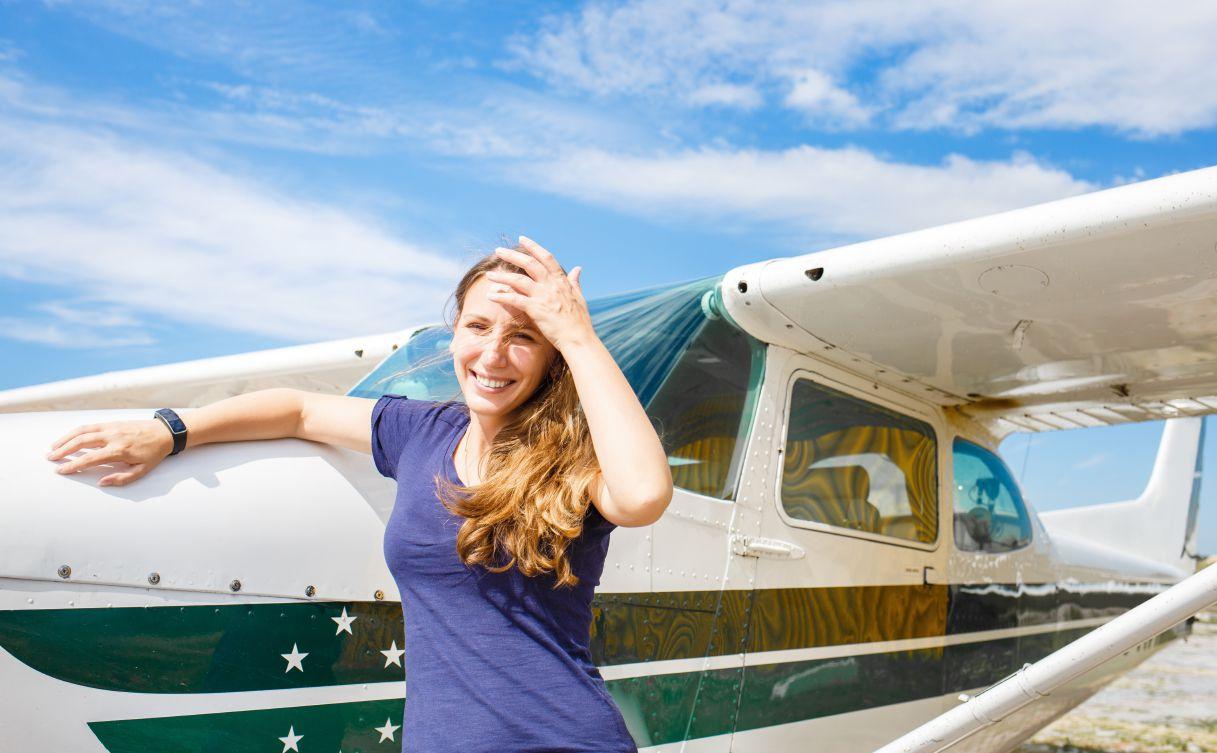
Imagining yourself flying an aircraft or a drone but feel like it’s out of reach? The Canadian Owners and Pilots Association (COPA) is offering three scholarships (total of seven awards) valued at nearly $25,000 to help Canadians pursue their dreams for flight.
$14,000 scholarship to put toward your dream to fly!
Through COPA’s Neil J. Armstrong Ab-Initio Scholarship, one worthy applicant between the ages of 16 and 21 will be given the opportunity to earn their Private Pilot Licence (PPL). COPA will cover the cost of the online ground school which provides the theoretical lessons for safe flying as well as contribute toward instructor-led flight training hours to help the recipient practice and master the required skills.
This longstanding scholarship was created in honour of Canadian Aviation Hall of Fame inductee and COPA past President, Neil J. Armstrong. COPA will provide up to $14,000 to support the successful applicant in pursuing their PPL (see guidelines for conditions).
Already a private pilot and would like to advance your flight training?
The COPA Advanced Flight Training Scholarship supports COPA members, 18 years of age or older with a PPL, interested in pursuing advanced licences (Commercial Pilot Licence) or
ratings (IFR, multi, float, night, etc.). Through the generous contributions of the former WestJet Pilot Association, this new scholarship helps to remove financial obstacles for COPA members with big flying goals. There are three (3) awards available, valued at $2,500 each. (See guidelines for conditions.)
Fly toward an interesting new career or hobby with a COPA RPAS Scholarship
Did you know that remotely piloted aircraft systems (RPAS), aka drones, have many uses? They can be flown recreationally for racing in tournaments; they can be flown to protect wildlife and assist forest fire fighting services, safeguard the environment, used for photography, and so much more!
Through the new COPA RPAS Pilot Scholarship, three (3) COPA members 18 years of age and older will receive training to obtain their Advanced RPAS Certificate to explore the many applications available for drone use in Canada. The scholarship includes ground school, flight review and exam expenses.
Applications Due by March 1, 2022
Whether you’ve always dreamed of becoming a pilot or have goals to soar to new heights, submit your application today by visiting copanational.org/copa-scholarships.

“I have a part time job to help contribute to my own expenses, but flight training has been out of reach for me.
The COPA Neil
J.
Armstrong Ab-Initio Scholarship
made all the difference for me in obtaining my private, and eventually commercial pilot licences.”
– Erik Yaremkewich, Squamish, BC, a past COPA Scholarship recipient

Founded in 1952, the Canadian Owners and Pilots Association (COPA) is a federally registered not-for-profit association that fosters the advancement of General Aviation (GA) in Canada. As the leading voice for the flying community nationwide, our mission is to advance, promote and preserve the Canadian freedom to fly. COPA is proud to represent close to 15,000 members from every province and territory who recognize the need for strong, effective representation resting on our core principles of integrity, commitment, unity and leadership.
As the largest aviation association in Canada, COPA is well-positioned to represent the growing needs for General Aviation
in Canada. Our efforts focus on keeping GA accessible and affordable, addressing the pilot shortage, promoting safety and lifelong learning and ensuring that Canadian skies are shared safely.
Visit the copanational.org/copa-scholarships webpage to learn more about each scholarship;
1. Read the COPA Scholarship Guidelines to ensure you meet the qualifications;
2. Complete the online form hyperlinked to each individual scholarship page;
3. Attach any Letters of Recommendation required per scholarship to the online form; and
4. Submit before March 1, 2022.
schools in Western Canada. Serving southern Alberta since 2008, Super T Aviation is a family owned operation and part of the Bar XH Sales group of companies. In 2019, Super T purchased a modern ALX simulator from Alsim. This is Super T’s second Alsim simulator after purchasing an AL200, which has been in operation since 2014.
Mitchinson Flight Centre | Saskatoon
Mitchinson Flight Centre’s Professional Pilot Course consists of three categories, including: Private Pilot License with a one year estimated length of program; Commercial Pilot License with a one year estimated length of program; and Multi Engine Instrument Rating, which is included in CPL program above. Mitchinson also operates an Advanced RPAS Training program consists of online ground school instruction that meets Transport Canada Requirements and the practical exam portion once the candidate completes the written exam through Transport Canada. All flight training, including RPAS, is conducted in and around the YXE John G. Diefenbaker Airport in a controlled environment.
Brandon Flying Club | Brandon
The Brandon Flying Club’s Flight Academy has served the region since 1936. Located at Brandon Municipal Airport, just outside of Winnipeg, BFA offers a continuous ground school, as well as Recreational, Private, and Commercial courses. Night VFR Over the Top and Instrument Ratings are also available. Transport Canada Written Recreational, Private, Ultra Light, and Helicopter exams can be completed at the centre as well.

Harv’s Air | Steinbach
Harv’s Air is a family owned and operated air service with locations near Steinbach and St. Andrews, both in the Winnipeg, Manitoba, Canada area. Our air service offers flight training, air taxi, and aircraft maintenance service since 1973 with the current owner and operator. Having two locations allows us to offer amazing resources for flight training including examiners, instructors, aircraft maintenance engineers. We offer accelerated but very comprehensive courses for pilot licences both for a career in aviation and for personal enjoyment.
Prairie Helicopters | Gimli
Prairie Helicopters, which also provides charter helicopter services, describes itself as Manitoba’s only turbine helicopter flight school. Its head office and main hangar are located at the Gimli Airport approximately 45 minutes north of Winnipeg. The operation holds a fleet of Bell 407, Bell 206L3 and Bell 206B helicopters.
Aerocourse | Oakville
AeroCourse provides advanced pilot ground school training. IFR and ATPL ground school seminars are conducted across Canada virtually and in-person which are designed to lead students through the knowledge necessary to be successful on their Transport Canada exams and to become better IFR and airline pilots respectively. We work with several flight schools and offer an Advanced multi-crew Training Program. The advanced program is a six- to seven-month course with over 270 hours of ground school training covering all the requirements for airline transition. It includes over 30 hours of multicrew simulator training. We are also part of the BFC Integrated ATPL Program designed to meet the flight crew skill needs of airlines. Students receive training in flight and ground school subjects approved by Transport Canada and cover the requirements of air carriers for new hire pilots as well as, providing trainees with insights into getting a job in the industry.
Brampton Flight Centre | Brampton
The Brampton Flight Centre, which includes the Brampton Flight College, has been training pilots since 1946. It provides training for those interested in pursuing a career or for recreational purposes, as a recognized Private Career College and Designated Learning Institute. Its most extensive program provides graduates with a Commercial Pilot Licence with Group One Instrument Rating. Ground school for the airline training for this program is provided by Aerocourse.
Brantford Flight Centre | Brantford
As one of the oldest flight training schools in Canada, the Brantford Flight Centre (BFC) has been providing quality flight training in Brantford, Ontario since 1929. Its instructors hold a vast history of experience from the aviation industry, offering students extensive knowledge of the Airline, Corporate and Instructor fields. Located in uncontrolled airspace, BFC allows students to avoid costly delays due to airspace congestion.
Canadian Flight Academy | Oshawa
Toronto Airways, through its Canadian Flight Academy subsidiary, provides an Integrated Airline Transport Pilot Licence curriculum, which also inlcudes support for new flight instructors. Based at Oshawa Executive Airport, the Canadian Flight Academy (CFA) provides opportunities through new collaborations with Seneca College.
Diamond Flight Centre | London
Diamond Flight Centre has been training pilots at the London International Airport since 2009 and, as a registered Private






Largest number of aircraft out of any Ontario college
Over 40,000 sq. ft. of premium aviation lab training space
17,000 sq. ft. hangar filled to capacity with aircraft
The campus is located next to Jack Garland Airport’s 10,000 ft. runway
• Aircraft Structural Repair
• Aircraft Maintenance – Technician/Technology
• Avionics Maintenance –Technician/Technology
• Helicopter Flight Training
• Aviation Fundamentals
Canadore Aviation Hangar Tour canadorecollege.ca/tours
Career College (PCC) in the province of Ontario, holds a full-time staff of certified flight instructors. The school also holds a fleet of 10 training aircraft manufactured in London, ON, by Diamond Aircraft, which develops modern glass-cockpit aircraft like the 2-seat DA20 and the new 7-seat DA62.
Collingwood Genesis Flight College is a registered Private Career College providing an emersive oneyear commercial pilot diploma program. Located at Collingwood Regional Airport, students can enjoy the surrounding landscape and many activities available in the region. The most significant advantage of the Genesis is that 100 per cent of the flying is in advanced aircraft with glass cockpits.
Canada | North Bay Helicopters Canada for approximately 20 years has provided commercial and private flight training to both domestic and international students. Its training area is situated at the Jack Garland Airport, which provides access to heavily forested areas with lakes and rivers for developing the skills needed for a large sector of the helicopter industry.
Thomas
| St. Thomas Established in 1996, the St. Thomas Flight
Centre offers flight training from Recreational Pilot Permit through to Commercial Pilot Licence and Multi-Engine Instrument Ratings. The centre holds Private Career College status and operates out of St. Thomas Airport in an uncongested flight training environment. School offices are located in the main terminal building and ground school classes are held on site.
Waterloo Wellington Flight Centre (WWFC) is located at the Region of Waterloo International Airport, offering a range of aviation training programs for fixedwing aircraft, as well as its Remotely Piloted Aircraft Systems. Specific fixed-wing programs, licences and ratings available at WWFC include: Recreational Pilot Permit, Private Pilot Licence, Commercial Pilot Licence, and Integrated ATPL, as well as Multi-Engine Rating, Instrument Rating, Night Rating, and Flight Instructor Rating. WWFC has partner programs with aviation programs of the University of Waterloo and Conestoga College.
The Windsor Flying Club (WFC) was incorporated in 1944 and has been in continuous operation since – now entering its 77th year

• Aircraft Structural Repair Technician
• Flight Services
• Aviation Technician – Aircraft Maintenance
• Aviation Technician – Avionics Maintenance Advanced Diplomas
• Aviation Technology – Aircraft Maintenance and Avionics
• Commercial Flight and Aviation Leadership
Graduate Certificates
• Applied Aerospace Manufacturing
• Composites and Advanced Materials
•
of high-level training for pilots as one of the longest serving original flying clubs in Canada. The club holds approximately 280 members and is also home to the Canadian Historical Aircraft Association.
Air Richelieu is an accredited flight training centre with facilities that include multimedia classrooms and flight preparation rooms. The school is located at St-Hubert Airport, approximately 20 minutes from Montreal, and controlled by the Montreal Flying Club.
Laurentide Aviation has been providing professional flight training since 1946. Based at Les Cedres Aerodrome, an uncontrolled airport, approximately 25 kilometres west of Montreal, Laurentide offers bilingual inflight and ground school instruction, as well as recreational, private and commerical pilot lisence courses.
Debert Flight Centre is part of the Truro Flying Club and operates out of Debert Airport, which has been home to the club since 1972. Debert Airport is an uncontrolled air space located less than is less than five minutes flight time from training areas.
MFC Training Aviation Career Pilot Programs provide all the required flight hours and examinations to graduate with a Commercial Pilot License, Multi-Engine and Instrument ratings. This program structure is designed to achieve maximum learning efficiency by ensuring that both flight training and in-class content is integrated through all training phases. These programs allow future pilots to move through the modules in a condensed time frame and provides a quicker transition to becoming a Captains.

GFT Aerospace has provided flight training since 1992, evolving from its roots as EVAS Air. Its facility is located at Gander International Airport. The aerospace college provides a fleet of 17 aircraft, including a helicopter, a flight simulator, large classrooms, individual briefing rooms, and a large technical library for students. | W




The Bombardier Centre for Aerospace and Aviation at Downsview Campus is a dedicated training ground for aerospace and aviation mechanics. With focused courses, cutting-edge equipment and industry professionals guiding our programs, your aircraft are always in good hands with a Centennial College graduate. centennialcollege.ca/downsview
Yukon College | Whitehorse
The Aviation Management diploma program at Yukon comprises a block transfer of pilot training credentials earned at Alkan Air (or other recognized flight schools) that equals one year or 30 credits and an additional 30 credits earned at Yukon. Students are expected to earn a Commercial Pilot License while concurrently earning academic credits. However, students may enter the program with some pilot training (a Private Pilot License, for example) or a completed commercial license. Students may complete the ground school and flight training component of the Aviation Management diploma in a flexible manner.
British Columbia Institute of Technology | Burnaby
The British Columbia Institute of Technology (BCIT) is partnered with Pacific Flying Club to provide students with the skill set to become airline pilots. The program is fully integrated, combining flight training with industry focused academic training. Flight training for fixed-wing aircraft is conducted at Pacific Sky Aviation’s flight school at Boundary Bay Airport, outside of Vancouver. Rotary-wing flight training, for those interested in becoming helicopter pilots, is provided by Chinook Helicopters in Abbotsford. BCIT’s Airport Operations diploma program is designed for the demands of airport operation environments. The 16-month Airport Operations program provides students with a comprehensive, interdisciplinary program of study. BCIT also offers an online Airport Operations Part-time studies Associate Certificate.
College of New Caledonia | New Caledonia
The College of New Caledonia provides an
Aviation Business diploma program, which accepts applications for continuous intake. The program is designed to provide trained single engine VFR pilots for entry-level pilot in command positions with Canada’s northern air carriers and with similar air taxi companies operating in difficult conditions around the world. The program centers around a PilotPlus approach to providing a supply of pilots to Canada’s northern air carrier industry. If taken in the minimum possible time, the ABD is a five semester program running over 24 months, with a four month break between semesters two and three.
Douglas College | New Westminster Douglas College’s Associate of Arts Degree for Future Professional Pilots is a program for students who wish to continue to a career in the aviation industry. This program is jointly offered with Professional Flight Centre, located at Boundary Bay Airport in Delta. Douglas provides the academic instruction leading to the Associate of Arts Degree and Professional Flight Centre provides the ground and flying instruction with enough flight experience to obtain a Commercial Pilot License and Multi-engine Instrument Rating.
Okanagan College | Kelowna
The Commercial Aviation diploma program at Okanagan College consists of two distinct and separate areas of study: flight training and business studies. The business portion is completed at Okanagan College and normally consists of two business courses per semester for a total of eight courses over two years. The flight-training portion taken with Southern Interior Flight Centre, out of Kelowna Airport, and consists of flight training, theory and exams.
Red Deer College | Red Deer Red Deer College’s (RDC) partnership with
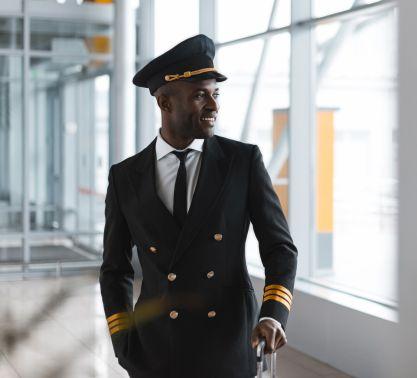
Sky Wings Aviation Academy combines a foundation in business with flight training. The 1-year Certificate program holds its business management courses at the Donald School of Business. Sky Wings Aviation Academy is located in Penhold, Alberta, near Red Deer and halfway between Calgary and Edmonton. Sky Wings states its students can expect a wide variety of flying conditions during their training. Flight training is provided approximately ten minutes from the RDC campus at Red Deer Regional Airport. Sky Wings Aviation Academy has providing flight training since 1982. Highlights of the Aviation Diploma Program include a transcontinental flight crossing the Canadian/ U.S. border, familiarization training for a regional or national airline and crew resource management. Most RDC courses are university transferable.
The Saskatchewan Polytechnic is a member of Polytechnics Canada, an alliance of 11 research-intensive, industry-responsive post-secondary institutions. The Polytechnic’s Commercial Pilot program is offered in partnership with the Saskatchewan Aviation Council, a membership-based association. The Commercial Pilot diploma program provides a strong foundation in the basic principles of aviation. Students study aviation-related topics such as the theory of flight, advanced aircraft systems and flight. Flight training takes place at a student’s home flying school.
Algonquin College | Ottawa
Algonquin College’s Aviation Management is a two-year diploma program designed to provide students with the knowledge and skills required to become a commercial pilot.

















Learn to maintain, repair and troubleshoot complex aircraft systems - everything you need to know to prepare for the Transport Canada Aircraft Maintenance Engineer (AME) license.
to know to prepare for the Transport Canada Aircraft Maintenance Engineer (AME) license.
Hands-on Co-op program | Highly Trained Instructors | Earn up to 21 months toward your AME licence
EMPLOYERS: Facilitate opportunities for career advancement and skills development. Support your employees to apply.

Brampton Flight Centre is recognized as one of the top-flight training schools in Canada and is proud to offer an Integrated Airline Transport Pilot Licence (IATPL) as one of our Professional Pilot Diploma programs. The 20-month IATPL program is designed to provide students with the skills required and sought after by airlines. It includes over 900 hours of instruction. The IATPL program covers the basics to advanced training delivered by industry experts. It focuses on advanced airline operational knowledge and uses a state-of the art full-motion airline simulator. Graduates from our program are eligible to apply to airline pathway programs.
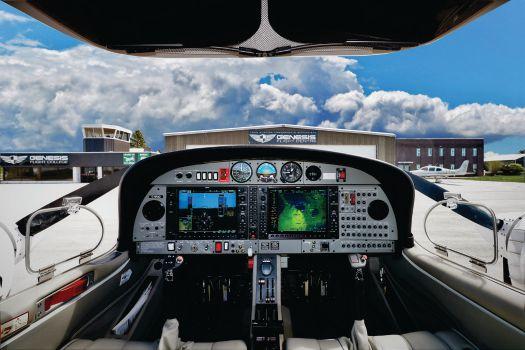

Genesis Flight College is a private career college offering specialized flight training programs which expose students to the most advanced equipment available in the industry Graduates of the one year program achieve a COMMERCIAL PILOT DIPLOMA and have the credentials required to begin flying as a career immediately
Through a series of classroom courses and practical labs, students have the opportunity to complete the Transport Canada Commercial Pilot Licence written examination (CPAER) and practical flight test. Algonquin has contracted the Ottawa Flying Club and Ottawa Aviation Services to provide up to 250 hours of flight time experience. During the final term, students can select one of the following areas of specialization: flight instructor, Initial Airplane Type Rating (IATRA) or seaplane rating. Flight Training is a non-funded activity and is an additional cost to complete this program of study.
The partnership between Canadore and Helicopters Canada offers a unique blend of academic, operational and hands-on rotary wing training. The college-structured classes combined with extensive practical training, both on the ground and in the air, will provide you with the skills, knowledge and attitude necessary to operate helicopters safely and efficiently under various flight conditions and remote geographical locations. Graduates will receive a Transport Canada Commercial Helicopter Pilot Licence, Canadore College Pilot Preparedness Certificate and numerous industryrecognized courses.
Conestoga provides the opportunity to earn an Ontario College Diploma in its twoyear Aviation, General Arts and Science, program. The pilot training portion of the program provides students with a choice between flying airplanes at Waterloo Wellington Flight Centre or flying helicopters at Great Lakes Helicopter. Training takes place at the Region of Waterloo International Airport. In addition to the regular Conestoga College tuition costs, fees for the Waterloo Wellington Flight Centre and Great Lakes Helicopter training are additional. The pilot training of Conestoga program is designed to allow students to undertake the Transport Canada commercial pilot license testing.
The Aviation Flight Management program at Confederation College combines business, management and flight training into one program. The 2 1/2-year program has been running at Confederation since 1973. The business and management training provide students with background knowledge to complete a detailed and comprehensive understanding of today’s aviation industry, while the college operates its owns aircraft (13) and three advanced flight simulators at
its Aviation Centre of Excellence hanger at Thunder Bay International Airport.
A student’s private pilot flight training begins in the first week of the first semester right from our hangar at the Thunder Bay International Airport. This training provides the opportunity become a commercial pilot. Confederation College explains its graduates have found aviation employment in northwestern Ontario, as well as with major (international) airlines, medevac and charter operations, scheduled services, flight instruction and the Canadian Armed Forces.
Fanshawe College’s Norton Wolf School of Aviation and Aerospace Technology provides a range of programs, including: Aircraft Maintenance Engineer, Structural Repair Applied Aerospace Manufacturing; Aircraft Maintenance Engineer, Maintenance; Aircraft Maintenance Engineer, Avionics; Aircraft Maintenance Engineer, Maintenance & Avionics; Commercial Flight and Aviation Leadership; Composites and Advanced Materials Aerospace Manufacturing; Flight Services (including Flight Attendant/Cabin Crew training); and Remotely Piloted Aerial Systems Commercial Operations.

airline-ready training program offered with one of our flight school partners, AeroCourse is here to help AeroCourse seminars feature excellent instruction with highly trained pilots, all working for Canada’s airlines and aviation colleges Seminars are held in person as well as virtually
The school’s Commercial Flight and Aviation Program provides a three-year diploma, focusing on safety management systems, Canadian air regulations, flight operations and logistics and airline operations. This program allows students to complete a fixed-wing Canadian Private and Commercial Pilot license with Multi Engine and Instrument Ratings.
Georgian College | Barrie Georgian’s three-year Aviation Management advanced diploma program consists of 38 courses, and students graduate with both a management and aviation skillset. Management courses are designed to give students an understanding of marketing, human resource management, communications and project management. A variety of aviation courses provide a solid understanding of the aviation industry in Canada and around the world. Students will also complete the examination to receive their Restricted Aeronautical Radio Operation License. The program, which has a fall 2022 intake, includes three hands-on co-op opportunities within the aviation industry..
The program has a very active advisory committee that helps maintain program relevancy by keeping the course content current – reflecting industry trends – and
ensuring graduates are job ready with the required skillset. There are several educational pathways for graduates. Georgian’s Aviation Management program is the only three-year program in Canada that allows students direct entry into Griffith University’s Master of Aviation Management, which can be completed with only an additional one-and-a half years of study. Students can also choose to complete one of four Bachelor of Science degrees with Embry-Riddle Aeronautical University, with only one additional year of study.
| Sault Ste. Marie Sault College`s Aviation Technology – Flight program is designed to prepare students for a career as a professional pilot. Graduates of the program who meet qualification criteria established by Transport Canada, will have successfully completed the requirements for the Integrated Commercial Pilot License Aeroplane, including the multi-engine instrument rating (CPL(A)IR). This licence meets all the requirements for a student to be a commercial pilot. Individuals with previous flight training start with a modified flight training program in the beginning; however, all students will be at the same level by second year. Students gain handson training with the college’s own fleet of
aircraft, including 10 Zlin and two Seminole Piper planes. These aircraft are supported by advanced flight simulators. Each aircraft includes advanced radio navigation systems and real-time aircraft tracking systems.
Seneca College | Peterborough
Seneca College, through its School of Aviation, is now educating students at the degree level with its 4-year Honours Bachelor of Aviation Technology program, which provides a technology-based curriculum and application of this theory to aviation. Flight training and classroom instruction for students in year’s two to four of the program takes place at Seneca’s Peterborough Campus. As a graduate, students may pursue future career options like professional pilot, flying instructor, air traffic controller, and civil aviation inspector. Seneca’s Airline Pilot Operations program focuses on the study of airline operations and administration.
Offered at its Toronto campus, Seneca’s Flight Services program encourages students to develop career-related skills, knowledge and behaviours needed for passenger service. Seneca has a range of partnerships with industry partners like Toronto Airways, CAE, Sunwing Airlines and Jazz Aviation, including direct entry into airlines. | W

Fraser Valley University | Fraser Valley
Completion of the program provides students with a university degree, private and commercial pilot licenses certified by Transport Canada, supplemented by both night and multi-engine instrument ratings. In fourth year, students have the option to specialize in either heavy jet transport operations or professional flight instruction.
University of British Columbia | Vancouver
University of British Columbia does not offer a specific aerospace engineer program, while offer a range of programs within its engineering department, including Mechanical. However, the school supports a range of aerospace-oriented, student-led teams.
MacEwan University | Edmonton
MacEwan’s partnership with Transport Canda allows allows students to earn a Business Management diploma with a specialization in aviation management. To complete the Aviation major, students must apply to the Business Management program. Upon graduation students declare the Aviation major. Students can block transfer credits to the third year of MacEwan’s Bachelor of Commerce.
Mount Royal University | Calgary
Mount Royal University’s Aviation Diploma program combines an academic diploma with the flight training needed to become a commercial pilot. Students require a completed Private Pilot’s License in order to begin the program. Practical flying experience is accumulated on Mount Royal’s fleet of aircraft consisting of Cessna single-engine aircraft and Seneca multi-engine aircraft.
Carleton University | Ottawa
Carleton’s Aerospace Engineering program
emphasizes the development of analytical, computational, and hands-on engineering and design skills related to the aerospace field.
Queen’s University | Kingston
Engineering and Applied Science provides opportunities geared at aviation and aerospace design. Mechanical engineers are needed wherever there is machinery. They drive every stage of design, manufacturing, construction and research.
Ryerson University | Toronto
Ryerson’s Aerospace Engineering bachelor’s program provides students with the opportunity to study aerodynamics, stress analysis and structural design, flight mechanics, stability and control, aircraft performance, propulsion, avionics and systems. Students also learn to design, test, manufacture and maintain aircraft or spacecraft, as well as vehicles for transport on land and water.
University of Toronto | Toronto
Students who wish to study Aerospace Science and Engineering at the University of Toronto enroll in the four-year undergraduate Engineering Science program. In the first two years, this program emphasizes mathematics, chemistry, physics and computing.
University of Waterloo | Waterloo
Established in 2007, Waterloo’s Aviation program allows students to earn a Bachelor of Science degree and, working with the Waterloo Wellington Flight Centre, a Commercial Pilot Licence. Welcoming approximately 45 new people each year, Students in the Aviation program have a choice of pursuing.
University of Windsor | Windsor
Windsor’s Aeronautics Leadership program combines a liberal arts and leadershipfocused education with commercial flight training. Students enroll in a Bachelor of Arts, Liberal Arts and Professional Studies.
Western University | London
Western’s Commercial Aviation Management program allows students to earn a Bachelor’s degree in Management and

Organizational Studies, with specialized courses in aviation management. Within the program, students have the option to combine a degree with professional pilot flight training, ultimately receiving a Transport Canada approved Integrated Commercial Pilot License with Multi-Engine and Instrument Ratings.
York University | Toronto
The Space Engineering program at York’s Lassonde School of Engineering provides an Beng degree. It focuses on areas of study from orbit control and space-based optics to ground station communications and robotics. Students learn about the management of complex multidisciplinary projects, including missions within the solar system.
Concordia University | Montreal
Concordia’s Aerospace Engineering (BEng) program is offered by the Department of Mechanical, Industrial and Aerospace Engineering, Gina Cody School of Engineering and Computer Science. The program allows students to specialize in Aerospace and Propulsion, Aerospace Structures and Materials, or Avionics and Aerospace Systems.
École Polytechnique de Montréal | Montreal
Ecole Polytechnique de Montreal provides undergraduate and graduate Aerospace engineering programs. Students in the graduate program follow at least two specialization courses given by the other participating institutions. Candidates who complete the professional master’s in Aerospace Engineering program obtain an MEng degree.
Mount Allison University | Moncton
The Aviation program is a degree-level platform with professional flight training. The flying portion of the program is offered through a partnership with Moncton Flight College. In the first year, students take introductory courses in mathematics, computer science, physics and geography. | W

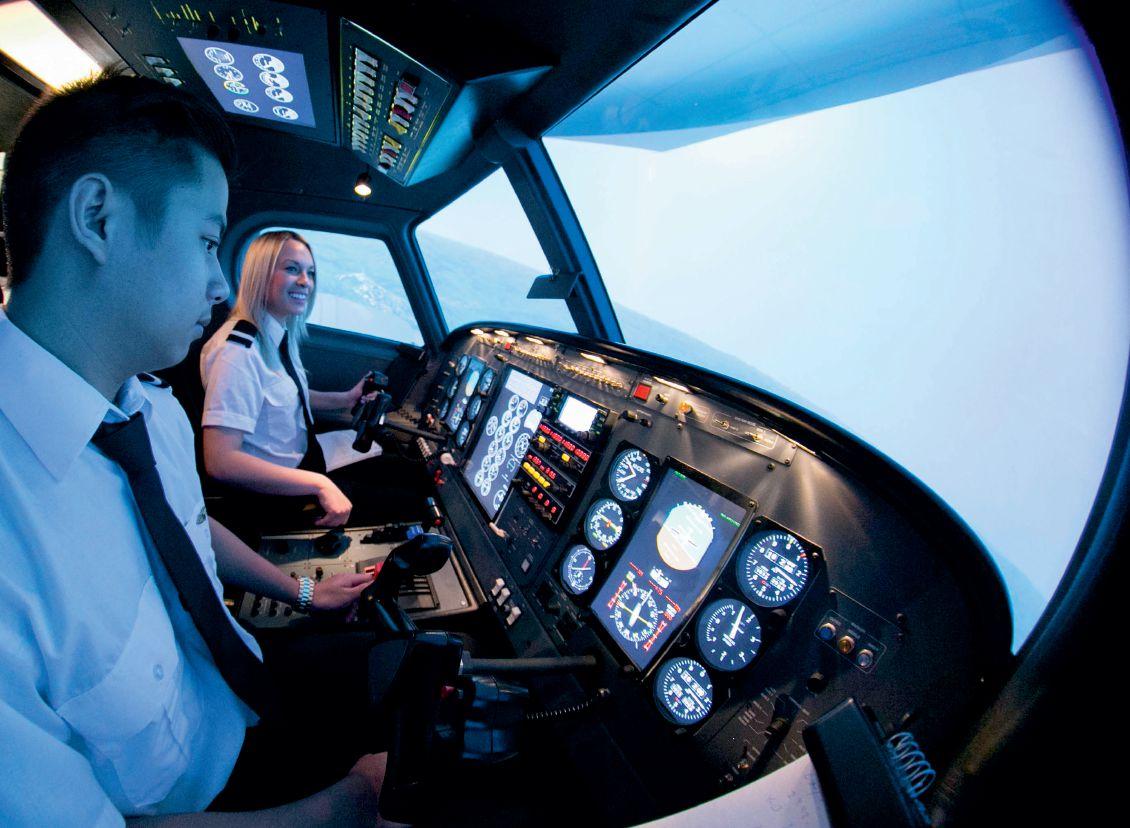
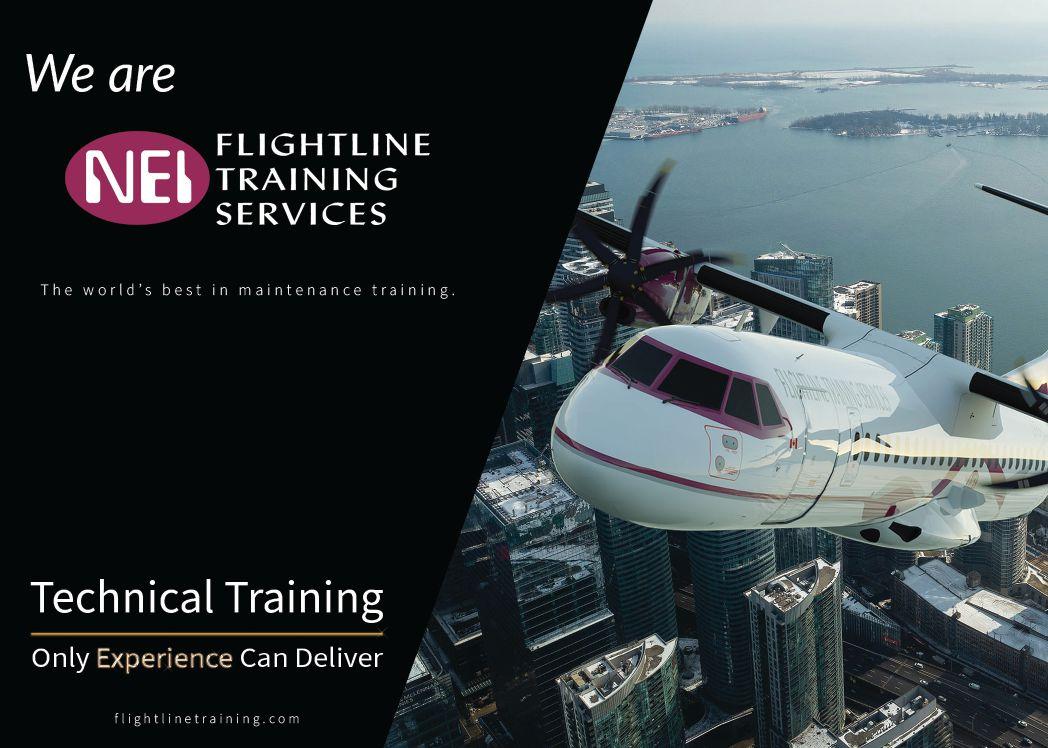
British Columbia Institute of Technology | Vancouver
British Columbia Institute of Technology (BCIT) School of Transportation prepares students for careers as Aircraft Maintenance Engineers, Aviation Maintenance Technicians (Avionics) and Gas Turbine/ Jet Engine Technicians. Its Aerospace Technology Campus is located at the Vancouver International Airport and features a 40,000-square-foot hangar that holds BCIT’s fleet of light piston, turboprop, corporate and jet transport aircraft, as well as light and medium helicopters.
BCIT’s Airport Operations diploma program is designed for the demands of airport operation environments. The 16-month Airport Operations program provides students with a comprehensive, interdisciplinary program of study. BCIT also offers an online Airport Operations part-time studies Associate Certificate. BCIT’s Aerospace facility is the largest provider of human capital resources to the aviation industry in British Columbia. In addition to category M and E technician programs, the school also provides courses for fixed- and rotary-wing pilots, and unmanned aerial vehicles.
Southern Alberta Institute of Technology | Calgary
The Southern Alberta Institute of Technology provides two primary programs, Aircraft Structures Technician and Avionics Technology. The Avionics Technology program offers the student the knowledge and skills required to start a career as an aircraft maintenance engineer (AME) E. As an E-licensed AME, you will be responsible for the servicing and repair of aircraft electrical and electronic systems and maintaining the aircraft communication, navigation and data systems. The Avionic Technology program
covers all the aspects of aircraft avionics systems used in general aviation, corporate, charter, transport category aircraft, and helicopters. The program is four semesters in length with a break between semesters two and three.
The Aircraft Structures Technician program offers the student the knowledge and skills required to enter a career to become an aircraft maintenance engineer (AME) S. As an S-licensed aircraft maintenance engineer, you will be responsible for the manufacture and repair of aircraft and aircraft components. The Aircraft Structures Technician program covers all the aspects of aircraft structure repair to general aviation, corporate, charter, transport category aircraft, and helicopters.
The Saskatchewan Indian Institute of Technologies | Saskatoon
The Saskatchewan Indian Institute of Technologies (SIIT) was created in response to the need for quality, post-secondary education for First Nations people. The SIIT Aircraft Maintenance Engineer program is open to First Nation and non-First Nation students, and delivers the knowledge and skills required for eligibility to apply as an apprentice in the aircraft maintenance industry. This includes learning to troubleshoot, maintain, repair and overhaul aircraft to meet Transport Canada’s standards.
Red River College | Winnipeg
Red River College (RRC) Aircraft Maintenance Engineer program is designed to develop the knowledge and skills in maintenance of both large and small airplanes and helicopters. It is designed to develop skills in maintenance of both airplanes and helicopters. Time in the program is split between the study of aircraft maintenance theory
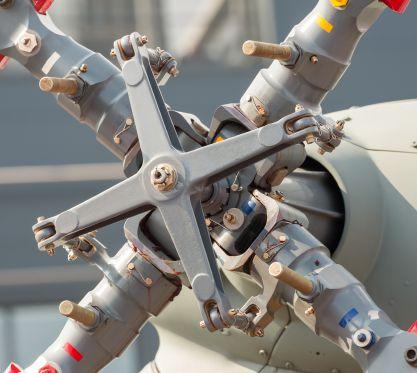
and practical projects. Upon graduation, if the student attained Transport Canada approved training status, they will be granted 19 months of the 48 months aviation maintenance experience and the three technical examinations required to obtain an AME license.
Algonquin College | Ottawa
The School of Advanced Technology at Algonquin College features With 23 laboratories, including precision machining, automotive, electronics, optical fiber, highpowered laser labs, mechanical modeling and element analysis, industrial controls, aviation maintenance and robotics labs. The includes two diploma programs in the school’s Transportation Technology segment called Aircraft Maintenance Technician and Aviation Management, General Arts and Science – both running for two years.
Canadore College | North Bay
Canadore Canadore College’s programs includes: Aircraft Structural Repair Technician; Aviation Technician – Aircraft Maintenance; Aviation Technician – Avionics Maintenance; Aviation Technology – Aircraft Maintenance and Avionics; Aviation Technology – Aircraft Maintenance and Structures; First Peoples’ Aviation Technology – Flight; Aviation Fundamentals; and Helicopter Flight Training.
The Aircraft Structural Repair Technician program allows students to specialize in repair, upgrading and the modification of an aircraft. Graduates receive 10 months accreditation towards a Transport CanadaIssued Aircraft Maintenance Engineer’s Licence, Category S. The Aviation Technician – Aircraft Maintenance program trains students how to troubleshoot vital aircraft components and systems, including piston and turbine engines, electrical systems, hydraulics, and navigation and communication
systems. Study the challenging complexities of fixed and rotary wing aircraft while gaining the theoretical knowledge you need for apprenticeship employment. The program is approved by Transport Canada. For Helicopter Flight Training, a partnership between Canadore and Essential Helicopters offers a unique blend of academic, operational and hands-on training. The college-structured classes combined with extensive practical training, both on the ground and in the air, will provide you with the skills, knowledge and attitude necessary to operate helicopters safely and efficiently.
Centennial College | Toronto Centennial College’s aviation technician programs offered within the School of Transportation include: Aviation Technician (Aircraft Maintenance), Aviation Technician (Avionics Maintenance), Aviation Technology (Aircraft Maintenance & Management), and Aviation Technology (Avionics Maintenance & Management).
The Aircraft Maintenance program provides mechanical, electrical, electronic and other science skills related to aircraft maintenance. It emphasizes the repair of electrical and mechanical systems within the aircraft. Students will study hydraulics, fuels, environmental systems, engines, flight
controls, landing gear system and airframes and structure. The Avionics Maintenance program covers aircraft communications, navigation and data systems, and inspection and troubleshooting of basic electronics circuits.
Confederation College | Thunder Bay Confederation Confederation College’s Aviation Center of Excellence is located at the Thunder Bay airport and includes the flight management and aircraft maintenance programs. The school’s Aviation Technician – Aircraft Maintenance program has been running strong for over 50 years. New for the program is a mandatory paid summer Co-op work placement between years one and two that provides our graduates with direct industry experience. The program is well known for small class sizes and accessible, experienced Faculty. Students train on helicopters, fixed wing, piston & turbine engines, all while learning about safety, standard practices, electrical, and structural repair. Approximately half of the program is delivered hands-on in various shop classes. Enjoy your lunch break in our student lounge with a spectacular view of one of Ontario’s busiest airports in one of Ontario’s most scenic locations.
Eligible graduating students of the
two-year program receive a minimum of 18 months of accreditation towards earning their Aircraft Maintenance Engineer (AME) license (M category). Up to an additional three months of accreditation, time may be earned depending on the length and type of co-op work term completed. In total, 21 months credit towards Transport Canada’s 48 month AME licence requirement can be earned through this program.
Fanshawe’s Norton Wolf School of Aviation and Aerospace Technology provides a range of programs, including: Aircraft Maintenance Engineer, Structural Repair Applied Aerospace Manufacturing; Aircraft Maintenance Engineer, Maintenance; Aircraft Maintenance Engineer, Avionics; Aircraft Maintenance Engineer, Maintenance & Avionics; Commercial Flight and Aviation Leadership; Composites and Advanced Materials Aerospace Manufacturing; Flight Services (including Flight Attendant/Cabin Crew training); and Remotely Piloted Aerial Systems Commercial Operations.
Its Aircraft Structural Repair program prepares students to repair, overhaul, and modify commercial aircraft in accordance with high standards of aviation safety. The hands-on, project-based curriculum in this



program provides students with technical training for material and component assembly, fabrication, manufacturing, and repair. In its Aircraft Maintenance program, you’ll learn about all aspects of aircraft systems used in general aviation, corporate, charter transport category aircraft, and helicopters. In its Avionics Maintenance program, you will learn about all aspects of aircraft avionics systems used in general aviation, corporate, charter transport category aircraft, and helicopters. You will also study aerodynamics, safety and flight control systems.
École nationale d’aérotechnique | Montreal
Located in the suburbs of Montreal, École nationale d’aérotechnique (ÉNA), the aeronautical institute of cégep Édouard-Montpetit is the largest aeronautical educational center in North America. The institute’s five hangars house 39 aircraft, including 28 airplanes and 11 helicopters. .
ÉNA is the only school in Quebec that offers programs in Avionics, Aircraft Maintenance, and Aerospace Engineering Technology, all of which combine practice and theory. In addition to these three-year programs in French, Aircraft Maintenance
is also offered in English. Graduates from two programs, Avionics (in French), and Aircraft maintenance, (in English), also benefit from an official Transport Canada recognition when they apply for the Aircraft Maintenance technician license to certify aircraft airworthiness.
The Nova Scotia Community College’s (NSCC) Aviation Institute is located in a 43,000-square-foot training facility. The school provides a two-year Aircraft Maintenance Engineer, Mechanical, diploma program. Courses focus on aircraft servicing and ground handling functions, Canadian Aviation Regulations, using specialized equipment to repair and maintain aircraft systems, interpret wiring diagrams and aircraft drawings, and assess sheet metal damage and appropriate repair procedures. The school provides a one-year Aircraft Maintenance Engineer, Structures, program.
Holland College | Summerside Holland College provides a one-year
Aircraft Turbine Technican certificate program at its Summerside Waterfront Campus in PEI. Aircraft turbine technicians inspect aircraft engines, troubleshoot issues with mechanical systems, and modify, repair, and test turbine engines.
Students learn techniques, procedures, and documentation requirements with an emphasis on practical training using a variety of turbine engines.
The College of the North Atlantic (CNA) is part of the Lufthansa Technical Training network of approved schools. The two-year Aircraft Maintenance Engineering Technician program is located at the school’s Gander campus in Newfoundland.
Graduates of this program earn North American and European certification and can attend the Institute of Technology in Carlow, Ireland, to earn an undergraduate degree in Aircraft Systems Maintenance with only one additional year of school. The one-year Aircraft Structural Repair Technician program also takes place at the Gandar campus. | W
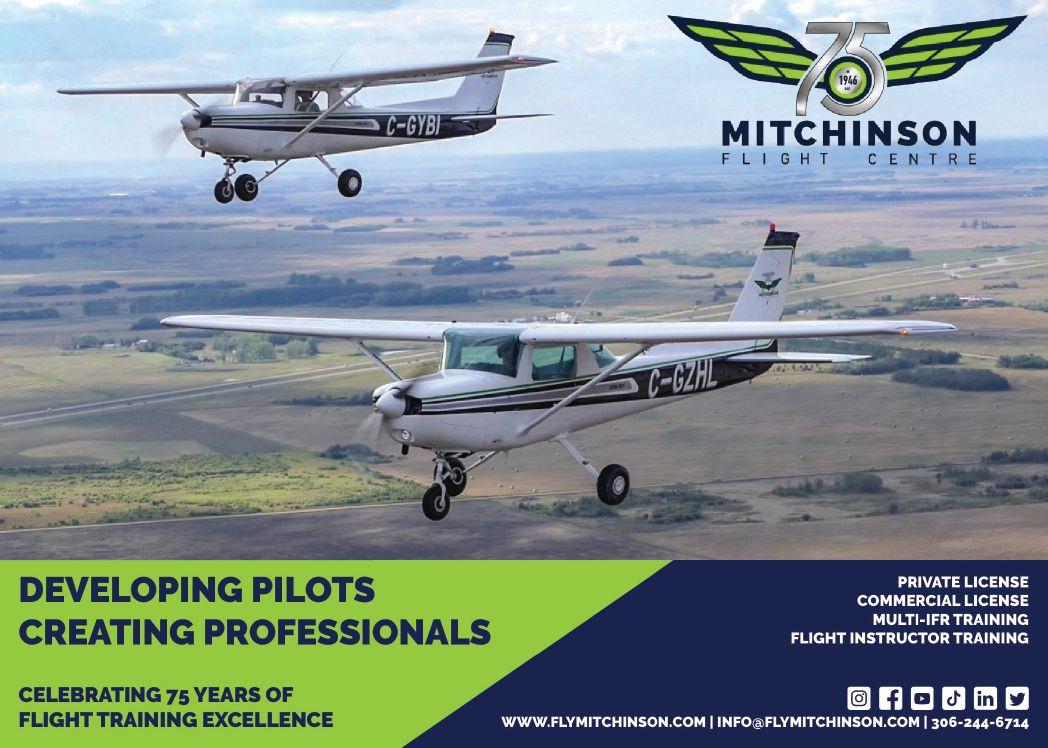


Headquartered in Calgary, Alberta, Canada. Eagle has been providing complete fleet management support to operators since 1975 and successfully transitioned from a small family business to a global team of experts, with a network of affiliates in North America, South America and Australia and across multiple OEM platforms including Bell, Leonardo, Sikorsky and Airbus.
We take efficiency and luxury as seriously as you do. Have your passengers experience aviation as it was meant to be with the comfort of more space, while maximizing your savings and time. Fly fast. Fly farther. Burn less fuel.
Experience the DA62.


